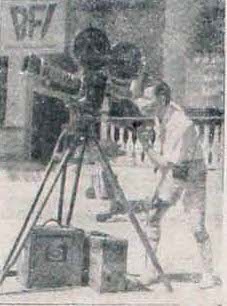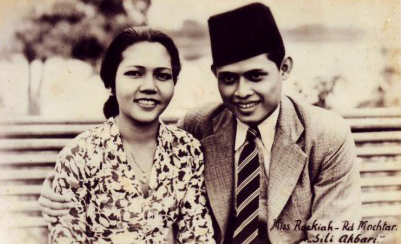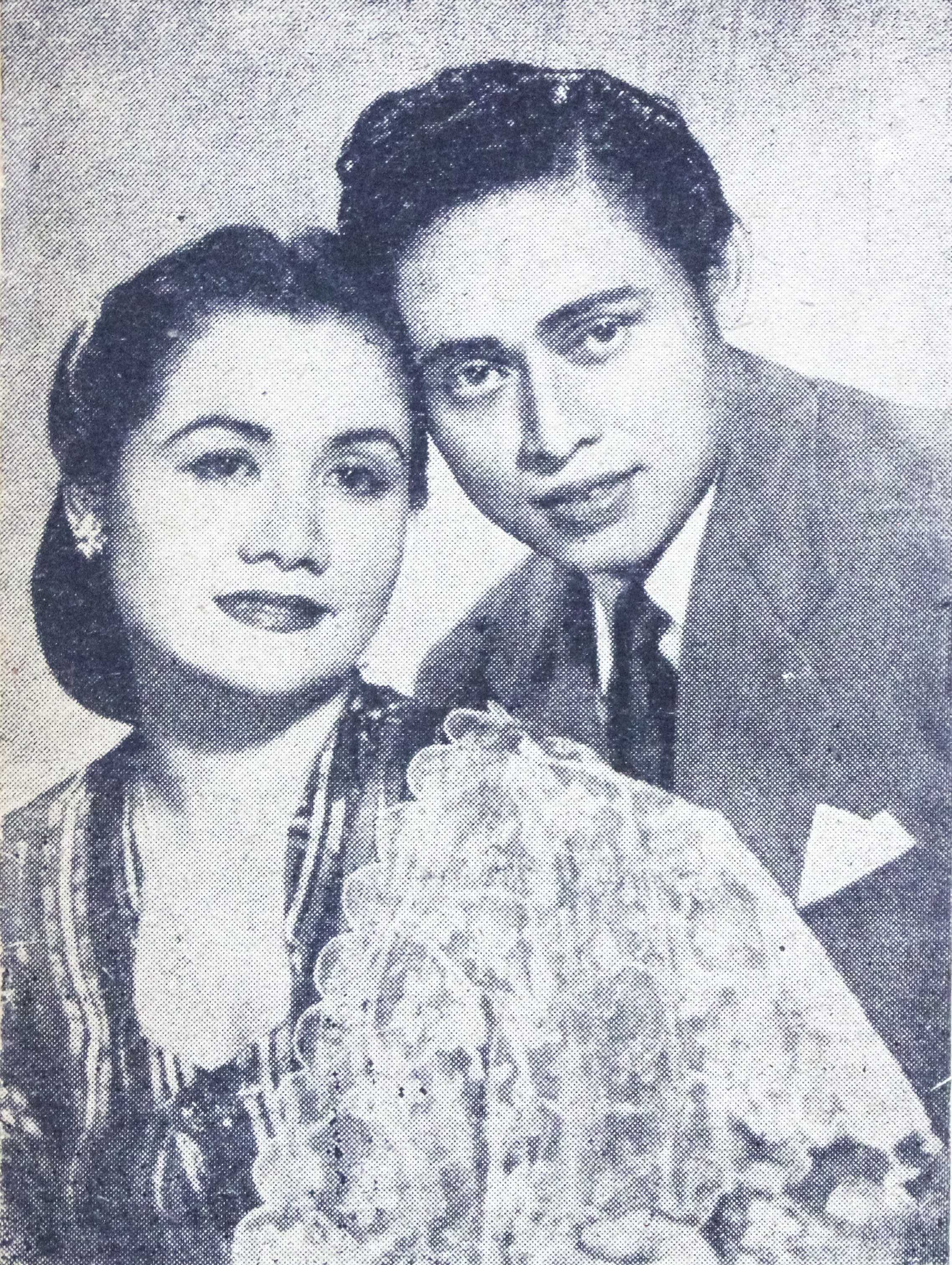|
Pareh
''Pareh'' (Sundanese for "rice"), released internationally as ''Pareh, Song of the Rice'', is a 1936 film from the Dutch East Indies (modern day Indonesia). Directed by the Dutchmen Albert Balink and Mannus Franken, it featured an amateur native cast and starred Raden Mochtar and Soekarsih. The story follows the forbidden love between a fisherman and a farmer's daughter. Balink began work on the film in 1934, working with the Wong brothers, who served as cinematographers. They gathered a budget of 75,000 gulden – several times the budget of other local productions – and brought Franken from the Netherlands to assist in production. The film was edited in the Netherlands after being shot in the Indies. The film was a commercial and critical success with European audiences, but disliked by native ones; despite this success, ''Pareh'' bankrupted its producers. ''Pareh'' resulted in a change in the cinema of Dutch East Indies, which had been Chinese-oriented for seve ... [...More Info...] [...Related Items...] OR: [Wikipedia] [Google] [Baidu] |
Terang Boelan
''Terang Boelan'' (; Indonesian for "Full Moon", ''Terang Bulan'' in the Perfected Spelling System) is a 1937 film from the Dutch East Indies (now Indonesia). Written by Saeroen, directed by Albert Balink, and starring Rd Mochtar, Roekiah and Eddie T. Effendi, ''Terang Boelan'' follows two lovers who elope after one is almost forced to marry an opium smuggler. The film was shot in the Indies and Singapore, and was partially inspired by the 1936 Hollywood film ''The Jungle Princess''. It was aimed at native audiences and included ''keroncong'' music, which was popular at the time, and several actors from Balink's previous work ''Pareh'' (1936). ''Terang Boelan'' was a commercial success in both the Indies and abroad, earning 200,000 Straits dollars in British Malaya. This success revived the faltering domestic film industry and inspired films aimed at Malay audiences in Malaya, creating a formula of songs, beautiful scenery and romance that was followed for decades afterwards. Th ... [...More Info...] [...Related Items...] OR: [Wikipedia] [Google] [Baidu] |
Raden Mochtar
Hajji Raden Mochtar (born 1918), often credited as Rd Mochtar, was an Indonesian actor. Of noble descent, Mochtar was discovered by Albert Balink and first cast in the commercial failure ''Pareh'' (1936). Rising to popularity after the release of ''Terang Boelan'' the following year, he spent nearly sixty years in film, while also becoming a businessman and farmer. Childhood and early career Mochtar was born in Cianjur, West Java, in 1918. He was a Javanese of ''priyayi'' (noble) descent. He did his elementary school studies at a Taman Siswa school in Bandung. In 1935 Mochtar was cast in the leading role of Mahmud in Albert Balink's film ''Pareh''. Balink was out with coffee with Joshua and Othniel Wong and saw Mochtar, whom he considered tall, strong, and handsome, driving by. Balink and the Wongs chased Mochtar in their car and caught him. For the film Mochtar was told to use the title ''Raden'', which he and his family had already abandoned. According to the Indonesian a ... [...More Info...] [...Related Items...] OR: [Wikipedia] [Google] [Baidu] |
Mannus Franken
Mannus Franken (6 February 1899 – 1 August 1953) was a Dutch filmmaker who played an important role in the development of Indonesian cinema. He made his debut as a writer before working with Joris Ivens in producing two documentary films. In 1934 he was called to the Dutch East Indies by Albert Balink to help with the production of ''Pareh'' (1936). Franken stayed in the Indies until before World War II, making newsreels. After the war he returned to the country and continued this work. In 1949 Franken returned to the Netherlands, where he made another film before his death. Biography Franken was born on 2 February 1899 in Deventer, the Netherlands. As a youth he worked as a writer-cum-director before moving to Paris in 1925; in Paris he wrote on the experimental films being produced in France, and in 1928 he directed the stageplay ''D 16 Mensch en Machine'' (''D 16 Man and Machine''), based on the story "Donogoo Tonka" by Jules Romains. The following year, working w ... [...More Info...] [...Related Items...] OR: [Wikipedia] [Google] [Baidu] |
Albert Balink
Albert Balink (3 August 1906 – 8 February 1976) was a Dutch journalist and filmmaker who contributed to early Indonesian cinema. Born in the Netherlands, he began a career in film journalism in the Dutch East Indies. A self-taught filmmaker, in the mid-1930s, he released a documentary and two feature films, before immigrating to the United States and resuming his journalistic career. Biography Balink was born in 's-Hertogenbosch, Netherlands. In the 1920s and early 1930s he was a reporter with '' De Locomotief'', a newspaper based in Semarang, Dutch East Indies, and the ''Soematra Post'', based in Medan. He wrote extensively about film while working at these papers. In 1934, Balink established the Java Pacific Film production company with the Wong brothers, headquartered in an old Bandoeng tapioca flour factory. Inexperienced with film, Balink had attained only theoretical knowledge gained from self-instruction. The company's first production was a documentary film, ''De ... [...More Info...] [...Related Items...] OR: [Wikipedia] [Google] [Baidu] |
Othniel Wong
The Wong brothers were three ethnic Chinese film directors and cameramen active in the cinema of the Dutch East Indies (now Indonesia). The sons of an Adventist preacher, the brothers – Nelson (1895–1945), Joshua (1906–1981), and Othniel (1908–1986) – received much of their education in the United States before going to Shanghai and establishing The Great Wall Productions. By 1927, Nelson had arrived in the Dutch East Indies and was working with Miss Riboet's Orion, a theatrical troupe. When its owner Tio Tek Djien suggested he make a film with the troupe's star, Nelson insisted that his family be brought to the Indies. Although this initial film was not realised, the brothers made numerous feature films with different studios under the banner Halimoen Film, starting with ''Lily van Java'' (1929). After a two-year hiatus, during which Nelson fell ill, Joshua and Othniel worked with Albert Balink and Mannus Franken to produce ''Pareh'', a commercial failure wh ... [...More Info...] [...Related Items...] OR: [Wikipedia] [Google] [Baidu] |
Java Pacific Film
Java Pacific Film (alternatively, Java Pasific Film) was a short-lived film production company that helped make significant contributions to Indonesian cinema in the 1930s. Background During 1934 and early 1935, all feature films released in the Dutch East Indies had been directed by The Teng Chun, based on Chinese mythology or martial arts, and targeted at low-class audiences, generally ethnic Chinese. This situation was created by the Great Depression, which had led to the Dutch East Indies government collecting higher taxes, advertisers asking for more money, and cinemas selling tickets at lower prices; this ensured that there was a very low profit margin for local films. During this period cinemas in the country mainly showed Hollywood productions. History Java Pacific Film was founded in 1934 in Bandoeng, in what was then the Dutch East Indies, by Dutch-Indonesian journalist Albert Balink working with the Wong brothers. Balink, who intended to target high-class audiences, had ... [...More Info...] [...Related Items...] OR: [Wikipedia] [Google] [Baidu] |
Wong Brothers
The Wong brothers were three ethnic Chinese film directors and cameramen active in the cinema of the Dutch East Indies (now Indonesia). The sons of an Adventist preacher, the brothers – Nelson (1895–1945), Joshua (1906–1981), and Othniel (1908–1986) – received much of their education in the United States before going to Shanghai and establishing The Great Wall Productions. By 1927, Nelson had arrived in the Dutch East Indies and was working with Miss Riboet's Orion, a theatrical troupe. When its owner Tio Tek Djien suggested he make a film with the troupe's star, Nelson insisted that his family be brought to the Indies. Although this initial film was not realised, the brothers made numerous feature films with different studios under the banner Halimoen Film, starting with ''Lily van Java'' (1929). After a two-year hiatus, during which Nelson fell ill, Joshua and Othniel worked with Albert Balink and Mannus Franken to produce ''Pareh'', a commercial failure ... [...More Info...] [...Related Items...] OR: [Wikipedia] [Google] [Baidu] |
The Teng Chun
The Teng Chun (; 18 June 1902 – 25 February 1977), also known by his Indonesian name Tahjar Ederis, was a Chinese Indonesian film producer. Born to a rich businessman, The became interested in film while still a youth. After a period as an exporter, in 1930 he established Cino Motion Picture to produce films in the Dutch East Indies. In a little over a decade he and his company had released at least 31 films, including some of the country's first talkies. Although he experienced a brief resurgence during the 1950s, after Indonesia became independent, he spent the last years of his life as an English teacher. Biography He was born in Batavia, Dutch East Indies (modern day Jakarta, Indonesia) on 18 June 1902 to a rich businessman name The Kim Ie. As a child he studied at a Tiong Hoa Hwe Koan school. The studied economics in the United States beginning in 1920. However, instead of following his father's footsteps The studied filmmaking at the Palmer Play Theater; ... [...More Info...] [...Related Items...] OR: [Wikipedia] [Google] [Baidu] |
Zuster Theresia
''Zuster Theresia'' (English: ''Sister Theresia'') is a 1932 film from the Dutch East Indies (modern-day Indonesia) directed by M. H. Schilling with the help of the Wong brothers. The film, starring Henk Maschhaup, Daisy Diephuis, and Alle Heymann, follows a young man and his relationship with two women. A commercial failure, the film was the last made by Schilling and led the Wongs to take a two-year hiatus. Plot Bob (Hugo de Rode) dies not long after finishing his studies in the Netherlands, and his classmate Henk (Henk Maschhaup) goes to the Dutch East Indies, where Bob's father Gelder (M. H. Schilling) has a small orchard outside Bandung. Henk begins helping the family financially, and marries Bob's sister Daisy (Daisy Diephuis). However, Daisy enjoys going to parties and dances, while their child Baby (Carl Schilling) is left alone. Henk calls his cousin Flora (Alle Heymann) to help with the child, and begins to fall in love with her. When Baby is taken ill, Flora treats him ... [...More Info...] [...Related Items...] OR: [Wikipedia] [Google] [Baidu] |
Ethnography
Ethnography (from Greek ''ethnos'' "folk, people, nation" and ''grapho'' "I write") is a branch of anthropology and the systematic study of individual cultures. Ethnography explores cultural phenomena from the point of view of the subject of the study. Ethnography is also a type of social research that involves examining the behavior of the participants in a given social situation and understanding the group members' own interpretation of such behavior. Ethnography in simple terms is a type of qualitative research where a person puts themselves in a specific community or organization in attempt to learn about their cultures from a first person point-of-view. As a form of inquiry, ethnography relies heavily on participant observation—on the researcher participating in the setting or with the people being studied, at least in some marginal role, and seeking to document, in detail, patterns of social interaction and the perspectives of participants, and to understand these i ... [...More Info...] [...Related Items...] OR: [Wikipedia] [Google] [Baidu] |
Avant-garde
The avant-garde (; In 'advance guard' or ' vanguard', literally 'fore-guard') is a person or work that is experimental, radical, or unorthodox with respect to art, culture, or society.John Picchione, The New Avant-garde in Italy: Theoretical Debate and Poetic Practices' (Toronto: University of Toronto Press, 2004), p. 64 . It is frequently characterized by aesthetic innovation and initial unacceptability.Kostelanetz, Richard, ''A Dictionary of the Avant-Gardes'', Routledge, May 13, 2013 The avant-garde pushes the boundaries of what is accepted as the norm or the '' [...More Info...] [...Related Items...] OR: [Wikipedia] [Google] [Baidu] |
Priyayi
''Priyayi'' (former spelling: ''Prijaji'') was the Dutch East Indies, Dutch-era class of the nobles of the robe, as opposed to royal nobility or ''ningrat'' (Javanese language, Javanese), in Java, Indonesia, the List of islands by population, world's most populous island. ''Priyayi'' is a Javanese word originally denoting the descendants of the ''adipati'' or governors, the first of whom were appointed in the 17th century by the Sultan Agung of Mataram to administer the principalities he had conquered. Initially court officials in pre-colonial kingdoms, the ''priyayi'' moved into the colonial civil service and then on to administrators of the modern Indonesian republic. Pre-colonial period The Mataram Sultanate, an Islamic polity in south central Java that reached its peak in the 17th century, developed a Kraton (Indonesia), ''kraton'' ("court") culture from which the Sultan emerged as a charismatic figure that rules over a relatively independent aristocracy. Named ''para yay ... [...More Info...] [...Related Items...] OR: [Wikipedia] [Google] [Baidu] |





%2C_p50.jpg)


